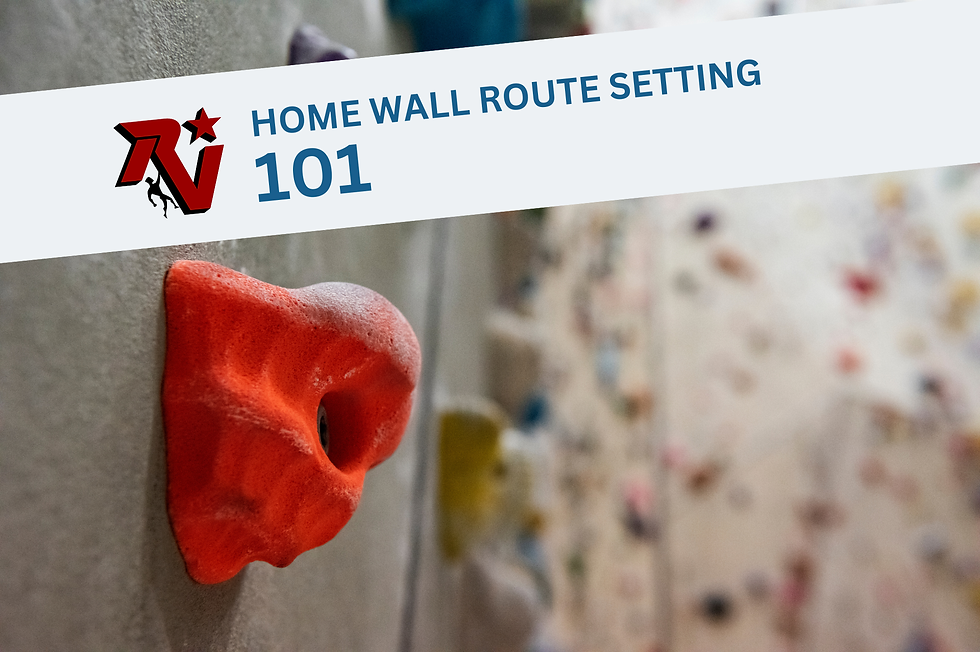Thumb Strength Matters As Much As Finger Strength In Climbing, Here’s Why
- Dovi Hirsch
- Sep 13, 2023
- 3 min read
by Christopher Schafenacker

If you’ve been climbing outdoors for any amount of time, you’ve discovered the infinite variety of hold shapes produced by real rock. Crimps are never simple, uniform edges; slopers are rarely anything like their blobular indoor equivalents; pockets bite; jugs deceive, and just about anything can be a pinch if you’re good at finding those elusive but oh-so-important thumb catches. This is one of the numerous reasons why nearly nobody climbs as hard outdoors as indoors, and it’s cause to re-evaluate how you train one of the pillars of climbing ability: finger strength.
When most of us think finger training, we image hanging from our four digits on a hangboard that imitates the hold types we find outdoors. A few fanatics go so far as to add a pinch block to their regimen but few do any more than this. Training finger and pinch strength will help improve general grip strength which, in turn, will help improve your ability to make the most of those all-important thumb catches.
Thumb catches come in all sorts of shapes and orientations which means you need to be strong in the full gamut of hand positions if you want to be able to pull hard on any and every hold. To achieve this, you need to not only train finger and pinch strength, but the entire gripping apparatus. It’s not just your hands that allow you to bear down on climbing holds, but your wrists, shoulders, and every muscle in between.
Addressing all the exercises involved in developing grip strength would require not just a short article, but a book. Nevertheless, a couple of exercises that you need to incorporate into your training right now include:
1. Wrist Rotations
Wrist rotations are an excellent exercise for enhancing grip strength and isometrically engaging hand flexors, extensors, and biceps. To perform wrist rotations, stand or sit while holding a dumbbell in each hand with your arms at your sides and palms facing inward. Maintain your elbows close to your body, lift the dumbbells until your forearms are parallel to the ground and your elbows form a 90-degree angle. Inhale and rotate your wrists away from your body, palms facing up. Exhale as you slowly rotate your wrists toward your body, palms facing down. This constitutes one repetition. Aim for three sets of 12 reps.
2. One-Arm Dead Hangs (Various Orientations)
Performing one-arm dead hangs from a pull-up bar yields various benefits, including strengthening stabilizing muscles in your shoulders, stretching muscles in your forearms, hands, core, shoulders, and back, as well as decompressing your spine. To execute a one-arm dead hang, jump onto a pull-up bar with a parallel grip, ensuring your fingers face outward. Release one arm and hold your body in a static position for up to one minute. Release and repeat with the other arm. Practice hanging with your body facing outward (parallel to the bar), angled (45-degrees to the bar), and sideways (90-degrees or perpendicular to the bar)
**Pro tip – if you aren’t capable of holding your weight with one arm: put your foot on a stool, or wrap a band around your knee and up to the bar, so that you can take a percentage of your body weight out of the equation!
Beyond improving the musculature required of integral grip strength, these exercises aid in injury prevention and rehabilitation. To read more about avoiding injury and staying strong so you can send hard, check out the numerous articles we’ve written on the subject at our blog.
Featured Climbing Training Gear
Maverick: The on-the-go, bring it anywhere hangboard. On a family road trip to keep your fingers in shape. We like to bring this to the crag with us to keep our fingers warm—without losing skin on mediocre warm-ups—at that steep, thuggy sport crag.
Pinch Blocks: Don't let pinch strength stop you from sending! Use it while hanging, lifting, and even for one arm hangs; featuring various widths for pinching, a 20 mm edge, and a jug.
The Rock-Stah: Our handcrafted version of a traditional hangboard, with curving crimp rails to help alleviate unnecessary strain on your pulleys. Because ain’t no one got time for a finger injury…
The Rocket Wall: Available in 6’ and 8’ widths, it’s been tough for us to keep up with the demand for this innovative home climbing wall solution. Slightly overhanging, the Rocket Wall is big enough to set routes on, or to build a systems board.











Comments